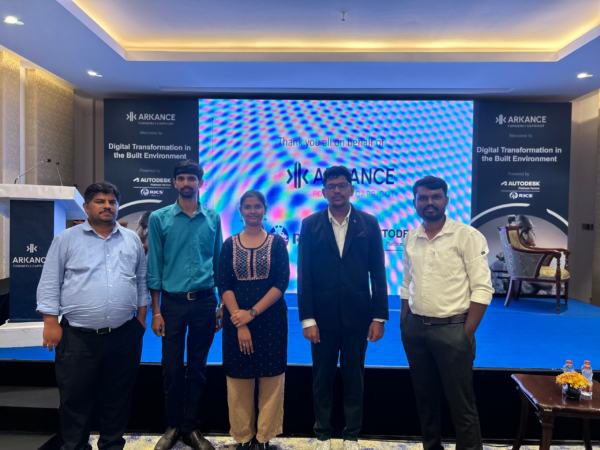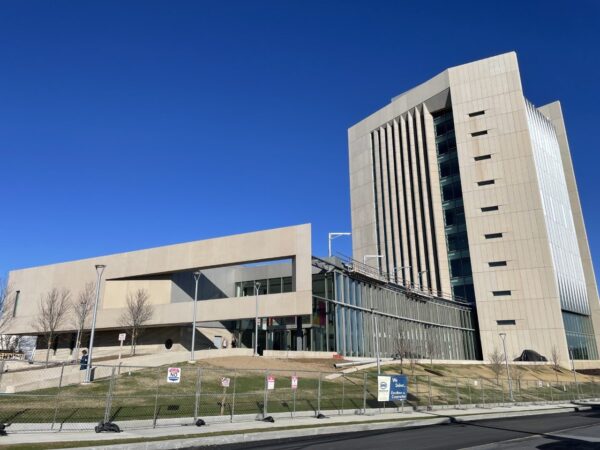
July 15, 2024 | Articles
Construction’s Digital Transformation & The Tools of Modern Project Management

According to the Northern Virginia Technology Council, Northern Virginia leads the entire world in data center density, associated job growth, and related economic activity. The region’s dominance in data center facilities only increased 2020, as the COVID-19 pandemic spurred demand for more and more capacity to support Zoom meetings, virtual classrooms, and a plethora of other digital communications.
Backing up this trend, a report from Data Center Frontier in December 2020 noted that Loudon County, Virginia, which brands itself as “data center alley,” had more than 25 data center projects underway in the second half alone of 2020, as compared to a “normal” year of 15 annual data center projects. Perhaps most telling, of the new data center capacity built in the U.S. in 2020, 64% was in Northern Virginia, according to the commercial real estate firm BBG. As the world continues to work and learn remotely into 2021, data center construction in the region will remain a priority for providers for the foreseeable future.
That industry leaders choose Northern Virginia for their data center projects makes perfect sense: Northern Virginia is home to the world’s largest cloud cluster. Estimates vary, but at a minimum some 10% of all U.S. Internet traffic passes through the region, and Northern Virginia has a decades-long head start on other regions due to its early investments in network infrastructure. This traffic and fiber optic backbone produces its own “data gravity,” which is essentially how a mass of data attracts applications, services, and still more data, requiring more data center capacity, in an ongoing cycle.
For owners, the chance to serve a public hungry for more data is always welcome. But realizing the benefits of data gravity in Northern Virginia presents challenges as well as opportunities. At Hill International, where our focus is exclusively on helping clients achieve their facilities goals, our experience in data center construction in Northern Virginia and elsewhere can help owners realize their new centers as quickly and as cost-effectively as possible.
Based on our work, we identified four major opportunities data center owners may want to consider as they plan their next fast-tack Northern Virginia data center project:
–Bring in A Construction Manager Early: The sooner a CM joins the project team, the greater the potential cost and schedule savings. If brought aboard during the RFP development phase, the CM can help identify the designers, contractors, and vendors best suited and most capable of meeting your goals. Prior to construction, the CM can also review the progress of design documents and flag any issues long before they slow work on site or result in costly change orders, claims, or delays.
–Conduct a Formal Risk Management Process: Whether following the risk management tools and techniques of the Project Management Institute (PMI) or conducting Monte Carlo analyses with the latest construction software, establish the risk management approach your team will implement and make sure this language is included in the RFP and contract documents. For fast-track projects in particular, the speed of decision making is critical to project success and having a formal Risk Register and Risk Mitigation plans ready to go will enable your team to handle challenges quickly and effectively.
–Focus on Quality Assurance: Quality Assurance (QA) plans are a key CM strategy, particularly with the utility infrastructure and numerous mechanical, electrical, and low voltage systems typical for data center projects. QA professionals, including civil/architectural/structural, mechanical, and electrical inspectors not only verify quality installations and support third party code requirements throughout the construction phase, they also confirm critical equipment is ready for commissioning and performance testing. In addition, QA inspectors liaise with utility agencies, who require inspection documentation to confirm utility design standards are validated.
–Start Commissioning at Kick-Off: In the rush to complete fast track projects, commissioning can often become a last-minute function, resulting in last-minute fixes done at last-minute prices. Instead, incorporate commissioning into the pre-design phase to define the systems and components that require commissioning, their associated requirements, and the commissioning scope of work. In addition, have all parties produce commissioning schedules, deliverables, and lines of reporting and communication.
For data center owners, incorporating these four steps into their project process will help minimize project costs and avoid delays. In addition, with the support of a qualified CM, data center projects that incorporate these ideas will also be better positioned to avoid claims, realize higher quality projects, and get up and running as quickly as possible.
By: Vice President Mike Mologne, PE, CCM, Hill International, Inc.
Share

July 15, 2024 | Articles
Construction’s Digital Transformation & The Tools of Modern Project Management

July 10, 2024 | Articles
GC/CM at Post Falls: Managing Avista’s North Channel Dam Rehabilitation Project

June 23, 2024 | Articles
Irv Richter – An Innovator, A Pioneer, A Leader (1944 – 2024)

June 14, 2024 | Articles
Environment of Care Standards – Meeting the Challenge (Part Two)

June 13, 2024 | Articles
PMO for Public Transit Project Success: The Reopening of Philadelphia’s Franklin Square Station

June 7, 2024 | Articles

May 17, 2024 | Articles
Hill Interim Federal Market Sector Leader Jane Penny Receives Golden Eagle Award

April 11, 2024 | Articles
A Model Move: Managing Move-In at the Sylvia H. Rambo U.S. Courthouse